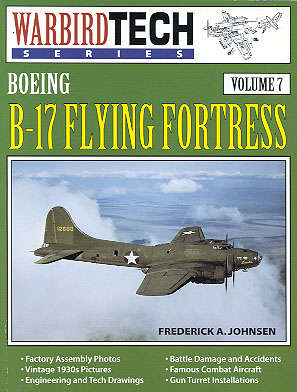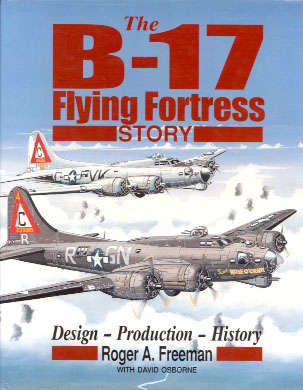
| site search by freefind | advanced |
AERO VINTAGE BOOKS
Product Reviews
Available here are some reviews of products which may be of interest to those with a particular fancy for B-17s, B-25s, or warbirds in general. The reviews are written from the perspective of a serious historian or enthusiast with an emphasis on items of interest to them. Also included are links or ways to obtain the reviewed item.Index of Reviews
Books
- B-17 Flying Fortress (Warbird Tech Series) by Frederick A. Johnsen
- The B-17 Flying Fortress in Israeli Air Force Service 1948-1957 by Alex Yofe
- The B-17 Flying Fortress Story: Design-Production-History by Roger Freeman with David Osborne
- B-17 Flying Fortress (Warbird Tech Series) by Frederick A. Johnsen
- B-25 Mitchell Units of the MTO by Steve Pace
- Bloody Skies: U.S. Eighth Air Force Battle Damage in World War II by Nicholas A. Veronico
- The Boeing B-17 Flying Fortress in Foreign Service by Jan Forsgren New Review!
- Douglas A-26 Invader (Warbird Tech Series) by Frederick A. Johnsen
- Everything But The Flak by Martin Caidin
- Fly A Big Tin Bird by Ralph A. Peterson
- Foreign Invaders: The Douglas Invader in Foreign Military and U S Clandestine Service by D. Hagedorn and L. Hellstrom
- The Heavenly Body Robert E. Shanks
- Hidden Warbirds by Nicholas A. Veronico
- Hidden Warbirds II by Nicholas A. Veronico
- Pride of Seattle: The Story of the First 300 B-17Fs by Steve Birdsall
- Red Stars 4: Lend-Lease Aircraft in Russia by Carl-Fredrik Geust and Gennadiy Petrov
- Shot Down by Steve Snyder
- Swedish Fortresses: The Boeing F-17 Flying Fortress in Civil and Military Service by Jan Forsgren
- Thirty Seconds Over Berlin by Thomas Gordon
- The 12 O'Clock High Logbook by Alan T. Duffin and Paul Matheis
- The Youngest Crew by Paul Wagner
Movies
- Pearl Harbor
DVDs
- Black Jack's Last Mission A Documentary
- The Bomber Reef A Documentary
- Swamp Ghost A Documentary
Videos
- Twelve O'Clock High
Compact Disks (CD)
- B-17G Flying Fortress: Technical Orders on CD-ROM
Jan Forsgren's The Boeing B-17 Flying Fortress in Foreign Service fills a void in B-17 literature. As the title states, this volume details the use of the B-17 in military service other than that of the U.S. It does so very well, with a variety of well-reproduced photos (many not published before), a textural treatment of each service's use of the B-17, and a series of eighteen color plates (superbly done by Juanita Franzi, Teodor Morosanu, and Janusz Swialon) detailing various unusual and rarely seen markings and schemes.
Covered here is the B-17 in wartime service with Canada, France, Germany (captured), Japan (captured), Switzerland, USSR, and Yugoslavia. Post-war use by Bolivia, Brazil, Denmark, Dominican Republic, Israel, Portugal, and Taiwan is detailed. Missing? Yep, British service with the RAF but this is freely acknowledged as being covered in detail by the publisher's companion volume, Boeing B-17 Fortress in RAF Coastal Command Service.
Each of the countries are listed in alphabetical order with about as much information as is available for the B-17s used by each, including serial listings and dispositions. Also, there is a nice selection of photos of these aircraft, most rarely or never seen before by this reviewer. Some of the stories are familiar to anyone with a working knowledge of the B-17, but there is nice coverage of areas rarely seen in the many volumes on the type, particularly the USSR and Yugoslavia.
It should be noted that the hard-to-find-but-worth-it Red Stars 4 has detailed coverage of the B-17 in Soviet service, but this volume has more photos and a good serial listing of the B-17s that ended up in Soviet hands. Also, the Alex Yofe volume, The B-17 Flying Fortress in Israeli Air Force Service 1948-1957, thoroughly covers Israeli service but it is nice to have it presented here also.
Other obscure areas covered is the use by Germany and Japan of captured B-17s with a larger selection of photos than I have seen before of both. Also detailed is the use by the Republic of China in missions over the People's Republic of China conducted by Chinese crews in aircraft provided by the U.S. CIA in the 1950s.The author lists five B-17s used for these missions, though only two are identified and I think only one (44-85531) can be certainly identified. Official records of such use are not available and the accounts can only be pieced together from various sources.
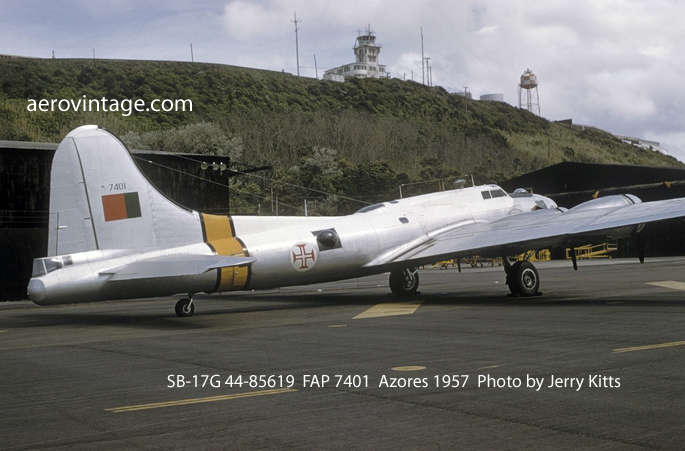
I have to take some personal responsibility for what I think is an error in this volume with regard to the identity of the fourth B-17 that Israel procured, and the incorrect (by me) suggestion that this B-17 may have gone to the Dominican Republic in 1948. I think the author picked up my incorrect information from an earlier edition of Final Cut, corrected and clarified in the fifth edition of that book in 2018. In a nutshell, all indications are that the fourth Israeli B-17 (most likely 44-85764) was impounded by Portugal and most likely scrapped in the Azores to support the Portuguese B-17s. In the Israeli section of this book, one photo caption has it correct but the serial listing of the IAF airplanes picked up on my error (shown as s/n 44-83842) and suggest this airplane may have then gone to the Dominican Republic. In the section on the Dominican Republic, the author repeats my error; there is little doubt that 44-83842 went straight from a U.S. civil owner to the Dominican Republic in 1948 and was not one of the Israeli aircraft. There is much confusion and intentional obscuration about several episodes surrounding the Israelis and Dominicans and I regret adding to that confusion. (The identity of the second Dominican B-17 remains unknown here and everywhere else as far as I know.) I only say all of this to try and clear up something I started; it does not detract from the overall excellent effort by the author and his artistic compatriots.
And, I should mention those eighteen color plates once again. They would be great for modelers and detail markings and colors of a wide variety of airframes covered in the book, including German, Japanese, Soviet, Yugoslavian, Swiss, and Danish.
This book is published by Stratus/MMP Books in Sandomierz, Poland, but available here in the U.S. from Amazon.com. (October 2020 review by Scott Thompson)
Bloody Skies by Nicholas A. Veronico comes from the Stackpole Military Photo Series and presents about 255 large black and white, well-reproduced, many rare, photos with detailed captions that strips away any sanitized veneer of what occurred over the skies of France and Germany during World War II for airmen of the Eighth Air Force. The striking photos that appear in this volume were dug out of archives along with the corresponding details that flesh out units and dates and people and accounts of combat that reside in each caption. Many of these photos depict astounding combat damage of bombers and fighters that somehow made it back from combat missions to crash land in England. More sobering are those that depict death in the air, of burning or wingless tangles of aluminum with a doomed flight crew aboard falling from the sky. Also worth a pause are those photos of airplane pieces in a field that resulted from local flying or training accidents, or those of accidents occurring during takeoffs with heavily loaded B-17s or B-24s that, at some critical moment, suffered a failure turning an airplane and ten men into a smoking hole at the end of a runway. Most of this book consists of the presentation of these photos with detailed captions; there is not much other accompanying text, but there does not need to be. Several of these photos will be recognized as they are widely published; included here, however, is the actual story behind the photograph that is usually found lacking in other accounts. Most of the photos have not been seen before, at least by this fairly well-read on the subject reviewer. There are six appendices that contains supplemental information about the Eighth Air Force and a good bibliography also included. An index of aircraft serial numbers for those aircraft pictured would have been useful to add to its reference value, but that is a minor point. The book comes in at 208 pages, 8.5 x 11.5 inches, and is printed on a nice coated paper stock. Definitely a great addition to any Eighth Air Force bookshelf.
Available from Amazon.com. (April 2016 review by Scott Thompson)
Shot Down by Steve Snyder, has the subtitle of The true story of pilot Howard Snyder and the crew of the B-17 Susan Ruth that aptly describes the content of this book. Author Steve Snyder is the son of the subject of the book, Army pilot Howard Snyder. The book is really in two parts: the first half tells the story of Howard Snyder through his Army enlistment, transition to pilot training, that training itself from primary, basic, and advanced. Then, as a newly minted pilot, Snyder transitions to B-17s and becomes an aircraft commander, having a crew assembled around him, and is then ultimately dispatched in the fall of 1943 to England to join the 306th Bomb Group with the Eighth Air Force. He was part of the replacements rushed to England to make up for some of the overwhelming losses of aircraft and crews that occurred with raids such as the Schweinfurt mission of October 14, 1943. Snyder and his crew arrived as a replacement on October 21st, just one week after that mission. Then the story details the first weeks and months as the crew is integrated into the 369th Bomb Squadron. For several reasons, Snyder got a slow start flying missions, only flying his sixth mission on February 6, 1944. Up to this point, the book fleshes out what most students of the Eighth Air Force and bomber combat operations are pretty familiar with...the training process, crew interaction, aircraft operations, combat dangers, and how missions were put together and flown. However, the book takes a turn with the seventh mission that Howard Snyder and his crew and their B-17G the Susan Ruth flew on February 8 against Frankfurt. The bomber was attacked by a pair of FW-190s with withering cannon fire that quickly disabled the bomber. The ball turret gunner and radio operator were killed outright in the attack, with several others seriously wounded. The surviving crew abandoned the crippled B-17 over Belgium where it subsequently broke apart and crashed. The rest of the book is the gripping and first-hand account of Snyder and other survivors as they sought to evade capture from German occupiers and Belgian collaborators, and how the Belgian and French underground protected and hid them for months. The story does not completely end happily; three crewmembers were captured and became POWs. But more tragically, eight American airmen, including three from the Susan Ruth, being hidden by the underground were captured in a surprise raid and ruthlessly executed in cold blood by their German captors. Many Belgians who had assisted those Americans were also captured, tortured, and executed by the Germans. Snyder eluded capture and went on to work with the French underground until liberation. Of the ten-man crew, five ultimately survived the experience and the war. So, the last half of the book turns from the air war over Germany to a tale of evasion and survival. The book is well researched by Howard Snyder's son Steve, with many excerpts from letters his father wrote as well as other first hand and personal accounts interwoven. It is definitely worth the read. The last parts of the book must be read carefully to keep track of all the individuals brought into the story and sometimes those involved are mentioned with their first names, other times their last names, so that seems to add to a rapidly growing list of airmen and resistance members who all have ongoing stories. Those well versed in B-17s and Eighth Air Force operations may find a few technical errors here and there but those are nit-picky. There is also some basic explanation of things that are probably already well understood by knowledgeable readers, but that is a necessity given the target audience of the book. Overall, well worth the time to sit down and absorb this book.
Available directly from the author right here or at Amazon.com. (March 2016 review by Scott Thompson)
Hidden Warbirds and Hidden Warbirds II, both by Nicholas A Veronico, are a pair of fascinating books that, as the books' subtitle states, document the Epic Stories of Finding, Recovering, and Rebuilding WWII's Lost Aircraft. The first volume, published in 2013, has five basic parts: Up From Under Water, In From the Jungle, The Frozen North, Lucky Finds, and Recovering the Big Fleets. The subject area of each part is mostly self-explanatory, but within each of those parts are multiple detailed accounts, well illustrated, of amazing warbird recoveries, each a stand-alone story within itself. For those reading these pages, two specific stories will no doubt draw the first attention when this book is opened: B-17E Swamp Ghost and Its Long Road Home and Some Assembly Required: B-17E/XC-108 Desert Rat, but the book is full of stories of recoveries of such exotic aircraft as an SB2U Vindicator recovered from Lake Michigan and B-26 Marauder recoveries from Canada. Now I'm a bit partial because I have worked with author Nick Veronico on a number of projects through the years, but he writes a good authoritative book and you can pretty much be assured of well researched, accurate history in each of the many detailed accounts he places in your hands in either of these two volumes. Add to that a good listing of additional references, some good subject websites, and a becoming-rare detailed index, and these hard-bound books become excellet references.
The second volume largely mirrors the first, but with more detailed stories on a whole slew of aircraft recoveries and other areas of interest, many of which are more obscure but should be of great interest to those reading these pages. For example, the section titled Where Did All the B-24 Liberator Go? takes a close look at the post war B-24 war memorials, of which the author has found and tracked no less the ten such examples. This is information you won't find anywhere else, at least not in one place, and certainly not illustrated with the variety of photos uncovered and published here, mostly for the first time in print. And, also of particular interest to readers here are two accounts, one entitled Dyke Lake B-17 Recovery and Recovering the Sandbar Mitchell. This pair of books is a valuable addition to any aviation enthusiast's library, and come highly recommended.
Hidden Warbirds is available at Amazon for $20.73. Hidden Warbirds II is available at Amazon for $20.73 (October 2015 review by Scott Thompson)
B-17G Flying Fortress in Israel Air Force Service 1948-1957 by Alex Yofe is an incredible book packed with never-before-seen photos and never-before-told information about the three B-17Gs utilized as part of the formation of the Israeli Air Force under very trying circumstances. This book details the whole story from acquisition, service in the 1948 war, the years in the early 1950s, the 1956 war, and the disposal of the aircraft. Also included are eleven full color pages with paint schemes and markings of the aircraft through the years for the modelers amongst us, and also those of us who have a special interest in such things.
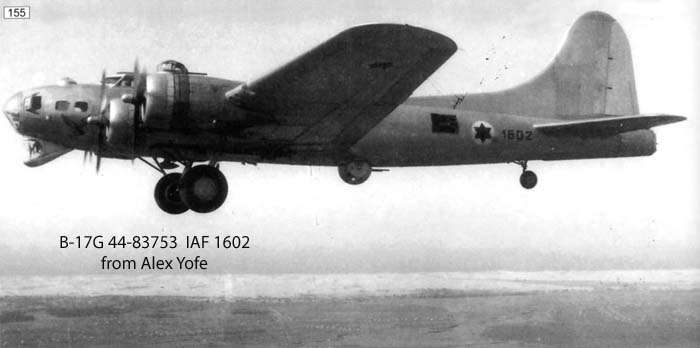
The photos speak for themselves and they are well reproduced on glossy paper stock, but captions provide additional information. Crew names are often included in both the captions and throughout the text that details missions and other operational information on the B-17s. This is the third book of a series being done by Yofe on the Israeli Air Force. Also covered in available volumes are P-51s, Mosquitos, and T-6s. More to come. The particular specifications: 96 pages and 217 black & white photos plus the 15 color profiles. Available at Amazon for $24.48. (June 2012 review by Scott Thompson)
Swedish Fortresses is a book that was long needed and it is finally here. It was put out by Mushroom Model Publications in the UK but published by the Polish publisher Stratus. Author Jan Forsgren covers in great detail the story of the nine B-17s that were interned by the Swedish government, eventually transferred from the U.S. AAF, modified for passenger transport, and their post war service in Sweden, Denmark, and France. The story of these nine aircraft is part of the larger story of the 143 American combat aircraft that diverted to Sweden off of combat missions conducted over Europe, a number that included sixty-nine B-17s, plus B-24s, P-51s, and several other types. Most of the American flight crews were interned for a good part of the war. The book details the transfer of nine of the B-17s from the U.S. government to the Swedish government in the fall of 1944, basically in exchange for the release of 500 American airmen being held. The B-17s were needed by the Swedish government to meet a pressing air transport need, and they were modified by SAAB to become civil airliners. The Swedish designated these modified B-17s as F-17, the "F", according to the book, being a nod of the hat to the U.S. Air Attaché Felix Hardison who made the deal possible.
The book has dozens of never seen photos of these nine airplanes through their years of service, and many will be surprised to see these rare views of the airplanes stored on airfields in Sweden, being modified by SAAB, and in operation as airliners. The book stock is heavy, coated paper so the (black and white) photos turned out very well. Individual aircraft histories are provided for each of the nine airplanes with their eventual fate. The layout of the book could probably be improved a bit...one gets the idea it wasn't quite what the author had in mind when it went to the publisher, but the information is all there. It is 64 pages of text and photos, with sections devoted to the French IGN use of several airplanes, the recovery of Shoo Shoo Shoo Baby (a Swedish survivor), and paint & markings.
Speaking of markings, the book is bundled with a little gem entitled Scale Plans Colour Profiles. It came to this reviewer encased in plastic wrap with the book and the proclamation "Not to be sold separately" but what it contains is eight large high quality color profiles researched by Nils Mathisrud and drawn by Teodor Liven Morosanu. Each contains a wealth of information about the markings carried on these unusual B-17s...er, F-17s. These are detailed sets of drawings that would be ideal for the modelers among us and tell a fascinating story by themselves.
The book and companion profiles would be a nice addition to any B-17 library and is available at Amazon.com. It is retail listed at $59.00 but available at Amazon.com for $43.07. (Scott Thompson 5/5/11)
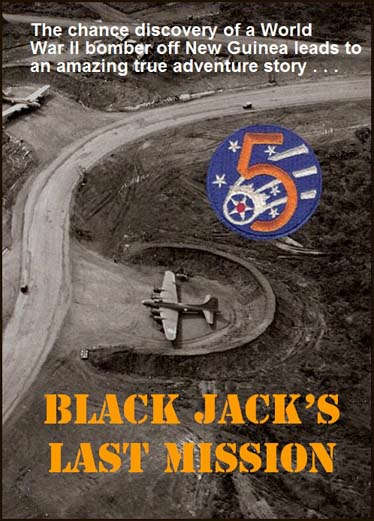
Black Jack's Last Mission is one of those little gems that is a bit unheralded but worth searching out. The bulk of the documentary, written and produced by long-time B-17 author and researcher and Australian Steve Birdsall, was actually filmed in 1988. However, it was released in a DVD format in 2008 by Pacific Wrecks, a well-known website run by New Yorker Justin Taylan, which also produced Swamp Ghost (see review below).
Black Jack was a Boeing built B-17F, s/n 41-24521, assigned to the 43rd Bomb Group and based at an airfield near Port Morseby, New Guinea, in the summer of 1943. On July 10, 1943, it and its ten man crew participated in a night mission against a Japanese airfield near Rabaul on New Britain. After engine problems, weather problems, and fuel problems the crew, led by Lt. Ralph De Loach, after completing the mission, had to ditch the airplane just offshore a New Guinea beach. The ten men escaped from the bomber and were helped by local villagers. The airplane, however, sank to the bottom of the ocean near a coral reef, not to seen again until it was rediscovered in late 1986.
And what a sight it is, seen in some stunning underwater photography on this DVD. The DVD tells the story of the airplane and crew through their ordeal in 1943, continues to the discovery by a dive team lead by Rod Pearce, and then focuses on the effort of Steve Birdsall and his assembled team that brought De Loach back to the New Guinea village that had saved him and his crew forty-four years earlier. De Loach visited the village in late 1987 and he puts the story into context with comments about the airplane's last mission and his reaction to coming back to the place where it had all happened. Interspersed in the narrative are some archival footage of B-17s operating from the Seven Mile airstrip and a great deal of that clear and colorful underwater photography of the airplane as it sat in 1987, filmed by a team led by Russell Galloway.
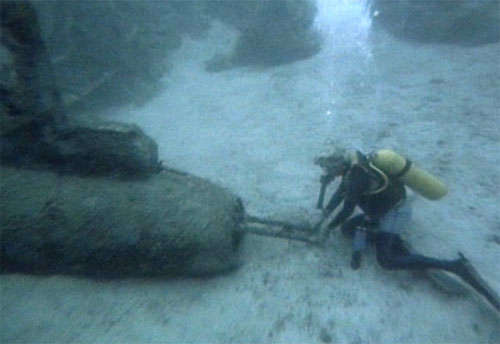
Steve Birdsall had been already written about the airplane in a 1973 book, Flying Buccaneers, when he learned it had been rediscovered in 1986. He continued to research the airplane after it was discovered and actually located De Loach living in California. He wanted to do a dedicated book on the airplane but his book editors didn't appreciate his idea as much as he did, so he pursued the idea of a documentary. He wrote and helped direct it, and assembled the team the put it together. The DVD is professionally produced and different versions of it appeared on Australian TV and also in the U.S. as a National Geographic program. When Justin Taylan took it on as a DVD project, a high-quality digital file formed the basis for the resulting DVD and the memorable underwater photography. Taylan added menus and one special DVD extra, shot with waist gunner George Prezioso with the Collings B-17G, probably circa 2007 or 2008. The documentary clocks in at about 50 minutes, not including the five minute extra with Presioso and some still photos included as a second extra. Well worth the money at $27.95 plus a couple bucks for shipping. More information and ordering can be seen here. Go for it. (Scott Thompson 8/26/09)
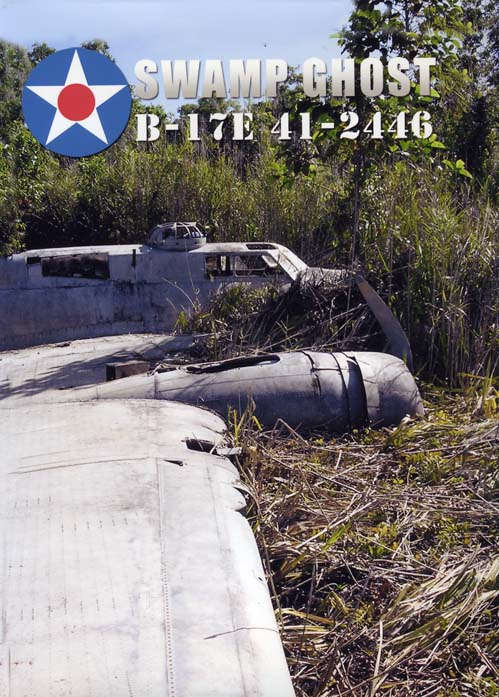
Swamp Ghost: B-17E 41-2446 was timely in 2005 when it was released; it is poignant now in 2008. The primary feature on the DVD tells, in documentary style, the story of this unique airplane and freezes its status in 2005. The following year, in May 2006, the airplane was disassembled and hauled out of the remote swamp in Papua New Guinea, where it had laid since February 23, 1942. Looking at the context now, is the story going to end better or worse for the airplane now that it's out of the swamp but disassembled, in storage, and entangled in a minor international dispute with its fate undetermined?
In spite of what happened in the succeeding years, the story as told in the DVD is an amazing one and one worth viewing by any B-17 de-vo-teee. Directed and produced by the guy behind Pacific Ghosts, Justin Taylan, it is a professional effort that should be, or maybe has been, on the likes of the Discovery Channel. The DVD tells the story of the B-17 and its crew from December 1941 to 2005. Featured are the three surviving crewmembers out of the original crew of nine: bombardier Richard Oliver, navigator George Munroe, and engineer/top turret gunner Clarence LeMieux. They are interviewed about their first bombing mission of the war...on February 23,1942, from Townsville, Australia, to the harbor at Rabaul, and back. Their crash landing near the north coast of New Guinea was the first part of a six week odyssey to get back to their base through swamp and jungle. (Interesting to note the airplane was an early B-17E with the Sperry remote lower turret--not the Sperry ball turret--but no remote lower gunner was part of the crew...indicative of what the crews and the local air commanders thought of the turret.) Also told is Taylan's own experiences in trying to locate and examine the derelict and abandoned bomber in the early 2000s (date not given). This airplane was "rediscovered" by the RAAF in 1972, and was becoming a bit of a tourist attraction until it was removed. The DVD has much "in situ" video of Taylan and two other adventurers examining the airplane in the swamp...only eight miles but a two day soggy and treacherous journey away from the nearest settlement, unless you have a helicopter.
Also included on the DVD are special features, two of which are nose to tail examinations of the bomber from the outside and the inside...fascinating stuff and invaluable now since the airplane is no longer there. Another feature documents a 1974 visit to the airplane with photos to compare its condition three decades later.
This DVD is highly recommended for anyone with even a passing interest in B-17s, even more so as this airplane still survives and is bound for somewhere...but who knows where? The DVD can be obtained at the also excellent Pacific Ghosts website. Check it out for some of the other great information about this lesser-known part of B-17 heritage. What makes the internet the invaluable resource it is are websites like Pacific Ghosts...stuff you won't find anywhere else in or out of print. (Review by Scott Thompson, November 2008)

The Bomber Reef is primarily the story of a B-25 and its crew that were shot down in the air war fought over Papua New Guinea during World War II. The DVD begins by telling the general details about how the U.S. ended up having heavily gunned B-25s flying combat against Japanese targets in New Guinea, including a great deal of actual footage and period photographs. Crewmember interviews are also included. The story then focuses down on the exploits of one B-25 crew, one that is ultimately shot down and crashes in the water off of Wongat Island. One crewman was killed in the crash, and the others were ultimately captured by the Japanese. All but one ended up being executed by the Japanese in New Guinea, with one survivor consigned to a POW camp in Japan.
The personal stories are riveting, but the last ten minutes of the documentary focuses on the B-25 wreckage located in 50 feet of water off Wongat Island. The underwater photography showing the current conditlon of the bomber, the top turret still containing the jutting .50 caliber guns, the cockpit instruments quite visible, is stunning. All told, the DVD runs at 52 minutes and tells a gripping personal story of the war in the South Pacific.
This DVD can be ordered from the production company, Seawest Productions, located in New South Wales, Australia. Walt Deas was instrumental in putting the production together, and he can be reached also on the Seawest Productions website located here. Ordering instructions are on the site. The correct address of Seawest Productions is, by the way, 20 Robinsville Crescent, Thirroul, New South Wales, 2115, Australia. They moved recently and there may be some confusion about their correct address. (Review by Scott Thompson, January 2008)
The 12 O'Clock High Logbook, subtitled The Unofficial History of the Novel, Motion Picture, and TV Series is just that, a thorough review of three three facets of one of the most durable fictional accounts to come out of the air war in Europe during World War II. Authors Duffin and Matheis have produced what appears to be a labor of love, a detailed look at the story behind Twelve O'Clock High, written as a 1946 novel by Bernie Lay Jr. and Sy Bartlett, produced by 20th Century Fox as a 1949 movie, and then produced by Quinn Martin as a TV series between 1964 and 1966. The authors dig into the history behind the fictional story, that of General Frank Armstrong and his brief experience with the 306th Bomb Group during the first year of the European air war. Both Lay and Bartlett were AAF veterans, Lay within the command of the Eighth Air Force, so their tale speaks the realness of men who were there. The success of the novel spurned the movie that starred Gregory Peck, which won several Academy Awards in 1950. The later TV series had a more uneven success, and the behind-the-scenes stories, including the replacement of actor Robert Lansing's Savage with Paul Burke's Gallagher, are addressed in detail. Also included are an episode-by-episode guide to the TV series. The movie in particular remains vivid today, and is used by various leadership-teaching venues as an instructional aid. The book comes in at 422 pages and is indexed. Minor criticism: the photos are small and grainy---the book may have enjoyed a better presentation with more and larger photos printed on better paper...perhaps in the pictorial history fashion. The book is a pretty complete tale, though, and adds to other pioneering sources such as the one done by James Farmer in the AAHS Journal back in the 1980s. A few questions remain: what of the longer version of the film rumored but not verified, that may have been released in Europe containing different scenes? The book is available for $29.95 at Amazon.(Review by Scott Thompson)
The Youngest Crew tells the autobiographical story of Paul Wagner and his experiences as an airplane commander of a B-17 with the 398th Bomb Group with the Eighth Air Force. More than a story about what was possibly the youngest crew to man a B-17 with the Eighth, the story could be an everyman story of the war. It is a deeply personal account of his wartime experiences, notable because it is well written and easy to read. Wagner enlisted in the Army Air Forces Aviation Cadet Program in November 1942, and the first third of the book takes him through the different phases of training. He chose to continue to train for multi engine aircraft and was , by February 1944 (as a barely-20 year old 2nd Lieutenant), in B-17 transition training to become an aircraft commander. He went from there to train B-17 copilots in Florida at a gunnery school and, in September 1944, was assigned as a B-17 pilot to pull a crew together for overseas deployment. The assigned crew of nine men had an average age of nineteen. After some training together, the crew was dispatched with a new B-17 to England and the Eighth Air Force, departing in late December 1944, just as Wagner turned twenty-one. They were assigned to the 398th Bomb Group and began flying combat missions in January 1945. Though the nature of the air war had changed by that date, it was still deadly and Wagner saw a number of his squadron mates shot down, primarily by flak. He and his crew flew twenty-five missions before the war ended in May. The appealing thing about this book is that it could probably be the story of thousands of men. The B-17 is only the backdrop for the story, and from a technical point of view it does not delve deeply into the airplane itself, nor does he particularly romanticize his feelings toward it. In fact, there are a couple of glaring (to us technocrats) errors about things like serial numbers and such. More than anything, though, this points to how unimportant those details were to these guys. Their airplanes were the tools to get them back and forth from their distasteful but necessary job. Wagner's emotions and fondness are reserved for his crew, not his airplane. The deep bonds of brotherhood cannot be missed, and it is understandable how combat crews came to place such a high value on these times while at the same time hating them. The Youngest Crew is highly recommended as an excellent crew autobiography, one that lets the reader into the heart and mind of a typical American bomber pilot from World War II. The book is softbound, 227 pages, illustrated with black and white photos, and published by Lagumo at Cheyenne, Wyoming. (ISBN 1-878117-13-0) It sells for $19.95 and is available at Amazon. (Review by Scott Thompson, December 2004)
Thirty Seconds Over Berlin is a well-written autobiography by a pilot who enjoyed a 55-year career in both military and civilian aviation. The book is subtitled “The story of a Nebraska boy’s life in aviation,” which pretty much says it all. Though his early years were in Nebraska, he began his participation in the aviation industry by helping build P-40 fighters in 1940 at the Curtiss-Wright plant located in Buffalo, New York, and then Martin B-26s at Omaha. After Pearl Harbor, he trained in the Civilian Pilot Training Corps and then proceeded through military flight training, earning his wings in August 1944. Gordon then went to Oklahoma City and trained to fly the P-38, going to Europe to fly the F-5 reconnaissance version of the P-38. He arrived in France to join the 33rd Photo Reconnaissance Squadron in December 1944, and remained attached to that unit through the balance of the European war. He was shot down by flak in April 1945, but managed to put his P-38 down on the Allied side of the combat line. The title of the book, a play on Ted Lawson’ well known book on the Tokyo raid, refers to an unauthorized low-level sweep over Berlin just as the Russians were capturing the city in early May 1945. The war ended shortly afterwards.
Gordon’s post war military career saw him flying a variety of aircraft, including the B-25, C-47, AT-6, C-46, and B-47, and ended with his retirement in 1969 as a Lt. Colonel. He went on to enjoy another two decades plus in the world of corporate aviation, flying for General Dynamics and other major companies, and playing a key role in the National Business Aircraft Association, before finally retiring in 1995 after a half century of flying. Along the way he married and raised three boys, probably not an atypical path for one of the ‘greatest generation.’
This reviewer has read a number of such autobiographies, and though most are interesting few are will written. Gordon writes with a breezy style that keeps things moving along without bogging down too much in philosophies or divergent details. Some strong opinions can be discerned just below the surface but not brazenly; that also is typical of men of this generation. All in all, this book is an excellent account of someone who had the good fortune to not only enjoy a very long, diverse, and interesting career flying some incredible airplanes, but also someone who fully realizes what he had. Published by JMT Publications of Shirley, Indiana, it is softbound, 291 pages, with black and white illustrations, and priced at $16.95. It can be ordered from Gordon Publishing, P.O. Box 452, Chesterfield, MO 63006-0452 for $16.95 plus $3.00 shipping. This book can also be ordered through Amazon. (Review by Scott Thompson, June 2004)
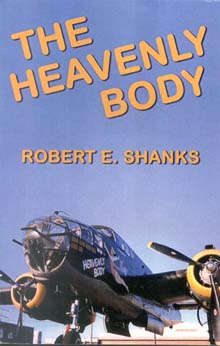
From the pen of World War II B-25 pilot Bob Shanks comes The Heavenly Body, a fictionalized story of the exploits of a group of Army Air Corps pilots from their pre-war training through to combat experiences in the South Pacific flying B-25s. The story's main character is Bob Edwards, who joins the Air Corps for flight training in the months before Pearl Harbor. After detailing the training process, the book moves on to show the characters joining a squadron flying O-52s to train observers. Later, the pilots move to A-20s and then, finally, to B-25s before being deployed to the South Pacific. Bob's airplane is The Heavenly Body, thus the title. Well told is the story of how men who depend upon each other for their lives grow unique bonds with each other as well as their airplane. Combat tour complete, Bob Edwards leaves the Body in the South Pacific and rotates home. A post-war tour of duty and then a job with an international oil company fills the next fifty years. However, Bob once again encounters his airplane, now flying as a warbird in the skies of Southern California. The circle has now closed.
The book is enjoyable to read and provides a window into the lives of World War II airmen. One suspects that the experiences of Bob Edwards mirror pretty closely to those of author Bob Shanks. At points, one also gets the feeling that things have been sanitized a bit, understandably, but there is an element of innocence that also pervades through the book, something quite missing in our cynical and 'anything goes' era.
One might also get confused a bit if the story of the Body is taken too literally as there is, indeed, a Heavenly Body that flies in the skies of Southern California. This is B-25J 44-30748 (N8195H), owned by Mike Pupich and based at Van Nuys. This is the airplane that is featured on the cover of the book and inspired its name. The Van Nuys airplane, though, never saw combat and was used in the post-war Air Force as a trainer. It later flew with Tallmantz in Catch-22. The book and web site information may prove a bit confusing about this airplane but it is, after all, a fictionalized story.
The book can be ordered at The Heavenly Body, 5803 K Sharon Rd., Charlotte, NC 28210, or online at this website. The cost of the book is $16.95 plus $4.50 shipping and handling.
(April 2003, Scott Thompson)
Over the years, Steve Pace from Tacoma, Washington, has written many books on the history of aircraft types. His books on the P-38, the Connie, Skunk Works and many other types of aircraft are well known. Some eight years ago, Steve published his first book on Mitchells, and in 2002 his second Mitchell book, B-25 Mitchell Units of the MTO, became available. One of the reasons I'm happy with this particular book is that it details much of the history of the USAAF groups equipped with the B-25 Mitchell in North Africa and the Mediterranean. The number of books on the Mitchell operations in this theatre of war is rather limited and the book fills a gap. The publications on Mitchell operations in Europe usually tell the stories of the Royal Air Force B-25s with their well known black and white D-Day invasion stripes. The US Mitchell operations in the southern part of Europe are lesser known.
After a description of the start of the 9th and 12th Air Forces in 1942, Pace gives details with first hand stories and many photographs of the five Bomb Groups and the many bomber squadrons in 9th and 12th. These stories are well documented and illustrated with b/w and colour pictures. Especially, the pictures of the Harry D. George files are unique. This book is the first of four volumes planned for the Osprey Combat Aircraft Series on the Mitchell details the colour schemes of the several squadrons, both in pictures as in drawings. The quality of drawings, pictures and text is very good.
One of the things I keep surprised of is the widespread misunderstanding on the number of Mitchells built. Steve Pace indicates that more than 10,500 Mitchells were built, of which some 9,800 ordered by the Air Corps and AAF. The total number of Mitchells built is 9,889 of which 9,817 were delivered to the AAF. This number includes all deliveries to other countries. General conclusion: not to be missed in a well-documented Mitchell library!
Details on the book: 96 pages, soft cover, Osprey Combat Aircraft #32, Osprey Publishing Limited. List price is $18.95 but is also available at Amazon.com for $13.27.
(December 2002, Coert Munk)

An incredible effort, in my humble opinion, by authors Carl-Fredrik Geust and Gennadiy Petrov. This book comes from Apali Oy, a publisher located in Tampere, Finland, and the fourth of a series of books on the Soviet air forces. This book covers in extreme detail the efforts of the Americans and British to supply the Russian government with thousands and thousands of airplanes under the auspices of Lend-Lease. In my experience, the material covered in this book has never before seen the light of day, at least in the West. Hundreds of photographs, many fuzzy or flawed but all interesting, grace the book, as well as some detailed appendices and some fine color line drawings, and example of which can be seen here. Lend-Lease to Russia has always been a bit of a puzzle, as most of the equipment (including thousands of tons of other armaments, foodstuffs, supplies, clothing, and electronic gear) disappeared into the black hole of Soviet secrecy after World War II ended. This book goes far in explaining and illustrating how the equipment was used.
The book details all of the transfers of equipment from the U.S. and Britain to Russia from the late 1930s through the end of the war, encompassing Lend-Lease but also other commercial purchases and equipment either given (i.e. a few Spitfires) or taken (interned B-29s). Delivery records are included, as are U.S. serials when known. Deployment tables show where the airplanes were used, including losses, shown by type. And types there were, including Bell P-39s and P-63s, Curtiss P-40s, Douglas A-20s and C-47s, North American B-25s, O-52s, and AT-6s, Hurricanes, and Spitfires.
The photos, which dominate the book, are laid out by type and appear to be just about every single available photograph of each type in Soviet service. There are nearly 100 of the A-20 alone, while the number of previously published Russian A-20 photos can be counted on one hand. The book itself is hardbound, printed on quality coated, semi-glossy stock, and comes in at 224 pages. The only color are the sixteen pages of exquisite artwork, done by Russian artist Valeriy I. Bulba.
The book is not readily available on this side of the Atlantic yet, but some diligent searching will locate a book. It is listed at Aeroplane Books for $50.00, or it can be ordered directly from the publisher. In any event, this book comes highly recommended. (Scott Thompson, December 2002)
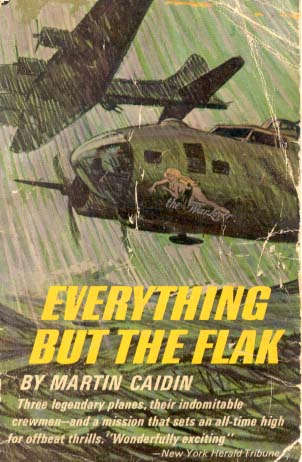
A quirky little book by a renowned aviation author...that's the best way to describe Everything But The Flak. For those unfamiliar with B-17 lore, the book tells the story of ferrying three B-17s from Tucson, Arizona, to Gatwick, England, in late September and early October 1961. The three B-17s were needed in England for use in the filming of The War Lover with actors Steve McQueen and Robert Wagner. The late author Martin Caidin flew as the copilot in the lead B-17 and his recollections of the epic journey gelled into this 1964 book. Though the book is long out of print, it is available in many library collections in a hardbound version illustrated with numerous black and white photos. It was a later paperback and copies are still available through internet and other sources.
For me, personally, growing up in the 1960s and 1970s and hungering for all things about the B-17, I was first introduced to Caidin's personal B-17 exploits in his later book Flying Forts. He told of his transatlantic flight in the final chapter of the book and referred to his earlier book about the ferry flight. I was able to order a copy of Everything But The Flak and eagerly devoured the book when I finally got my hands on it. I would later exchange letters with Caidin's personal secretary about the story. Looking at the book now, it comes across as a perfect snapshot of the Martin Caidin style.
Caidin was from the old school of aviation authors. He had written through the 1950s and produced several books in association with the Air Force and the Air Force Thunderbirds. He had written about various aspects of America's young space program and made a bit of a name for himself. He later wrote several biographies on World War II aces, books on the P-47, P-38, and B-17, among others, and a number of fictional war stories. He may be best known for Marooned, later made into a motion picture, and Cyborg which morphed into The Six Million Dollar Man on television.
Despite his books on aviation history, Caidin was more of a storyteller than an aviation historian. One can't really use his books as source material for research because the wheat and chaff are tied too closely. In the case of Everything But The Flak, there is a lot of chaff but it does make for good reading. He revels in the 'wild and woolies' image he attaches to himself and the other crewmembers of the three bombers as they, seemingly, performed continual and magnificent aeronautical feats in what had to be a perpetual alcohol-induced haze.
Some of it tends to get a bit thick in parts. He details in great length a contentious meeting with Russians and Cubans at Gander, Newfoundland, in late September 1961. To read it here, they single-handedly broke the story about Russians in Cuba and dashed stories off to the New York Times and other newspapers.
After making emergency landings (numerous engine fires and other problems) at Lisbon, Portugal, the entire B-17 entourage is arrested by the secret police for gun running and Caidin relates the incident like an adventure novel. The thing about Caidin is it all might have happened just as he wrote it, or he may have written it as he remembered it to be, or it might be embellished just a bit with his style. One doesn't really know and really can't find out. In any event, the book is a legend in B-17 literature and should be read if only for the experience. Enjoy. (Scott Thompson, April 2002)
All color, all the time.... Number Four in the Osprey Frontline Colour series is B-26 Invader Units Over Korea by veteran writer Warren Thompson. An excellent color pictorial history of the unsung B-26 during the Korean War, this book also provides a great deal of information in its detailed captions and textural history. The three bomb groups, (3rd BG, 452nd BG, and 17th BG), as well as the reconnaissance units, that flew the Invader are all covered. Many detailed photos of operational B-26s with crewmen, nose art, squadron insignia, and armament are included. Thompson is well known for his Korean War research, and he comes through again with this unique and overdue look at the Invader over Korea.
The book is softbound, 128 pages in length, with many, many crisp, large, color photos all printed on a glossy stock. It is available from a variety of sources and lists at $19.95. It is available at Amazon.com for $13.96.
I tried to approach the new Hollywood blockbuster Pearl Harbor with an uncritical spirit, understanding how Hollywood theatrics usually treat aviation subjects so poorly. I was going to enjoy the movie for the movie's sake...purely as entertainment. Thus, I didn't expect much, but I was still disappointed.
Somehow the moviemakers trivialized the Japanese attack on Pearl Harbor, which had to be hard to do. It was spectacular, for sure, but during the attack scenes I sat there thinking "I wonder how the computer guys did that?" rather than being transported emotionally to the event. The movie was more like an entirely predictable twenty cent romantic yarn with a glitzy attack sequence in the middle. The mixed reviews I'd read of the film indicated as much, so I guess it should not have been so disappointing to me. All the aviation activity aside, the film plodded along, to say the least.
Coming from the perspective of some knowledge about the actual history of the Pearl Harbor attack and subsequent Doolittle Tokyo Raid, I could only grimace at some of the plot. This also was to be expected. But some things have to be mentioned.
For example, the two principal characters are Air Corps pursuit pilots. Aside from all the earlier plotting, these two guys somehow showed up all over the place during the actual raid. They were asleep in a car when the raid began, and were personally strafed by fighters as they drove back to, presumably, Hickam Field. They spent quite a while being strafed and bombed on the flight line, then drove to their P-40s on another airfield, I guess. Then they spent some time in a sandbagged gun emplacement hiding behind the sandbags so the Zero pilots flying around wouldn't see them. Finally they got to their fighter and got off the ground, after which they tried to shake numerous Zeros off their tails. They finally worked around and caused all their pursuers to hit each other in a massive mid-air, freeing them to go and shoot down a bunch of the attacking Japanese airplanes. Despite the massed confusion, nobody on the ground shot at them. After the raid finally ended, they went to the hospital to give blood, providing a convenient moment for the two guys and the girl (a nurse) to glare at each other for a while. Then the guys were called down to the harbor to try and cut some guys out of a battleship. Then Jimmy Doolittle called them because he was planning a raid and they were about the only combat qualified guys in the Air Corps, so he "needed them" for his one-way mission. You get the idea.
The Doolittle Raid sequence was, for plot purposes, cinematic retribution. Again, most of the old P-40 squadron guys were now B-25 crewmen. There were scenes showing the pilots trying to haul their B-25s off 400 feet of runway. The pilots didn't run their engines up to maximum power and release brakes; rather, they started rolling and then slammed the throttles forward and kept yelling "Full power...full power." Once they were aboard the Hornet, they steamed toward Japan. The movie depicts the actual raid being conducted in a tight formation of sixteen B-25s instead of the single ship attacks of the actual raid. And, somehow, the lovely nurse is able to hear all the pilots talking to each other because the mission was being monitored from a big room at Pearl Harbor. She emotes more as she follows her "boys" along. Well, not to give the plot away, one of the "boys" doesn't make it, but they can bring him home from China in a C-47 with Doolittle and the other survivors.
Again, I didn't want to be harsh about the film because I knew it played loose with reality. There were a lot of fine aviators who worked on the film; I hope they got paid lots of dollars. I had a chance to overhear some of the actual Doolittle Raiders discuss the film (at the Fresno Reunion). Pained embarrassment would be an apt description.
As for the flying scenes themselves, they were pretty good. The computer animation was integrated into the shots so it was often hard to tell real from bytes. The P-40 and B-25 footage was often so tight perspective was lost, but there were some shots of low-level P-40 flying that had Steve Hinton written all over them. The attack scenes, computer generated, had the Japanese fighters zooming through the harbor at F-18 speed and it looked more like a video game.
For the price of admission, you could also rent Tora Tora Tora and Thirty Seconds Over Tokyo (both good flicks), buy some microwave popcorn, and swerve back toward reality.
If you insist, it is available at Amazon.com. (Scott Thompson 6/2/01)
Another volume in the Warbird Tech Series is Douglas A-26 Invader by Frederick A. Johnsen. The story of the A-26 is little told and there is a void of good material on this striking attack bomber. This 100-page volume fills in the void a bit, with a great deal of new material and photos that illustrates the varied history of the Invader. Because the USAF changed the designation of the Invader from A-26 to B-26 in 1947, there has been continual confusion among the general public with this airplane and the Martin B-26 Marauder. Regardless, the Douglas A-26 served the AAF and USAF in World War II, Korea, and Vietnam, plus soldiered on in numerous cold and hot wars since it was first introduced in 1944. It also enjoyed a long civil utilization as a fast corporate transport in pre-Learjet days. Johnsen serves the airplane well here, following the Warbird Tech format of technical order excerpts, production photos, a selection of color plates, and text which details various aspects of the airplane and its service. As in the other Warbird Tech volumes, the width and breadth of a airplane's service history is a bit cursory due to the limited space. Nonetheless, a good addition to anyone's library. Bottom line: this airplane looks hot just sitting on the ramp.
This book is 8.5" x 11.0", 100 pages, 4 pages of color photos, with color cover and back. It is list priced at $16.95.
This book and the Dan Hagedorn/Leif Hellstrom Foreign Invaders both go a long way in telling the history of the Invader. This book is available at Amazon.com. (Reviewed August 2000)
A B-17 niche book is Pride of Seattle: The Story of the First 300 B-17Fs by Steve Birdsall. A production of Squadron Signal, the book is in the Squadron format with numerous large and detailed black and white photos, accompanied by eight pages of full-color artwork profiles of aircraft. The meat of the book are the brief histories of each of the first 300 B-17Fs that rolled from the Boeing production line. Included in this number are some better known B-17s such as "Memphis Belle" and "Hell's Angels." No doubt this group of B-17Fs bore the brunt of the early European air war and it is interesting to read about these aircraft and their ultimate fates.
Australian Steve Birdsall is well known in B-17 book circles, having written a number of histories about the early combat airplanes in service. The first book I saw by Steve was back in the mid-1960s entitled "B-17 Flying Fortress" and was part of the series put together by Len Morgan. A 1968 title was "Hell's Angels" put out by Grenadier, probably the first 'nose art' book and actually better than most of the succeeding attempts. He's written a number of other books about various other aircraft but he seems to have specialized in the B-17. In any event, "Pride of Seattle" is up to the standard and provides that extra bit of detail on particular B-17Fs that comes in handy when looking at a photograph or pondering the fate of a particular airplane.
This book is 8.5" x 11.0", 64 pages, 8 pages of color art, with color cover and back. It is list priced at $9.95 and available from Amazon.com. (April 2000)
This 175 page book are the recollections of Ralph A. Peterson about his experiences as a bomber pilot during World War II. Fly A Big Tin Bird starts with Peterson being selected as an aviation cadet and moves through the flight training and his assignment to a gunnery school flying B-17s. He is later assigned to a combat crew and, once in England, assigned to the 379th Bomb Group based at Kimbolton in East Anglia. He and his crew flew thirty-two missions beginning on February 3, 1945 and ending on April 19, 1945, as the European war drew to a close. The book is well written, engaging, and tells the first-hand story of what it was like to fly the B-17 in combat. The book is a self-published effort but this in no way detracts from the results. It is available at Amazon.com. (October 1999)
One of the best, if not the best, aviation movie ever produced is Twelve O'Clock High, now enjoying its fifty year anniversary. Released by 20th Century Fox in 1949, the movie was based upon a pretty-true-to-life novel by Eighth Air Force veterans Bernie Lay, Jr. and Sy Bartlett. It tells the exploits of the fictitious 918th Bomb Group (either a combination of the 91st and 318th BGs, or 3 x 306th BG, depending upon your source) and General Frank Savage during the early months of the American air war over Europe. The story follows the 918th as a hard-luck B-17 Group with high losses and low morale and the methods Savage uses to turn the group around. In the end, Savage becomes a psychological casualty of the war. The movie stars Gregory Peck as Savage and Dean Jagger as Harvey Stovall. "Twelve O'Clock High" was nominated for several Academy Awards in 1949, and Jagger was awarded Best Supporting Actor for the year. The film was directed by Harry King.
Of particular interest to B-17 aficionados is the airplane footage. The Forts are not central to the movie but become the stage from which the drama is set. The film judiciously draws from AAF combat footage for the action scenes. Shot in 1948, the film makers also utilized a squadron of ex-atomic test drone B-17Gs on loan from the USAF. They were refitted with turrets and repainted as Eighth Air Force B-17Fs. Most of the airfield scenes were shot at an abandoned auxiliary field to Eglin AFB (in Florida) but located just across the state line in Alabama. That airfield has since been reopened as Fort Rucker with the Army. The dramatic opening scenes to the film were shot as the film makers found the unused airfield. It was later cleaned up and dressed as an operational English bomber station.
One of the most dramatic aerial scenes used in the film (and reused in other later films) was the B-17 belly landing done by Paul Mantz. (There is a whole legend behind Mantz's solo B-17 flight and crash landing.) Mantz also provided his B-25H, NX1203, for a cameraship for some of the aerial scenes. There are several published accounts of how the film was made. James H. Farmer has assembled the most complete story to date in his book, Celluloid Wings. Whether or not you care about the history of the film, it remains an aviation classic and should be in anyone's B-17 library. This black and white video is available from Amazon.com. (August 1999)
A good example of a meticulously researched volume that is both readable and a reference source is Foreign Invaders: The Douglas Invader in Foreign Military and U S Clandestine Service by Dan Hagedorn and Leif Hellstrom (Midland Publishing Ltd.). The Douglas A-26 Invader is an unsung type, arriving late in World War II but serving later in both the Korea and Vietnam conflicts. Becoming the very definition of hot attack bomber, the Invader enjoyed nearly forty years of combat with military forces around the world. "Foreign Invaders" looks past the regular USAAF use of the type and delves into the A-26 in service in the smaller air forces of Africa, South America, Southeast Asia, as well as covert use by the USAF and CIA in Southeast Asia. All foreign use is covered, including lend-lease and U.S. military assistance programs. Much of the information and photos uncovered by Hagedorn and Hellstrom must have been extremely difficult to come by, so it is to their credit that it is presented in an authoritative yet readable fashion. Of particular interest is the Bay of Pigs fiasco, for which the A-26 played a major role, and the conversion of Invaders to the B-26K configuration for use in Vietnam by the USAF beginning in 1964. Also, the documentation of some covert A-26 gun running by Aero Associates out of Tucson, Arizona, (to Portugal) in 1965 is presented. Much legend and misinformation has surrounded the activity of this small group and it seems to be set straight here for the first time. The book is printed on high-quality paper with good photo reproduction. Type size is small to fit all the information in; even at 200 pages it is still packed full of material. It's the kind of book any serious aviation historian would have liked to have written. Available from Amazon.com. (May 1999)
One of the "Warbird Tech" (Volume 7) series put out by Specialty Press is B-17 Flying Fortress by Frederick A. Johnsen. The "Warbird Tech" series tries a different slant on the subject airplanes, with detailed looks at parts of the airplanes with technical order excerpts reprinted on items of interest. Frederick Johnsen has done a number of books in the series and has done a nice job on the B-17 volume. There are 100 pages crammed with detailed photos of sub-assemblies, gun blisters, cockpit views, drawings of nose glass installation, as well as operational and combat views. There's a bit of an emphasis on the early, pre-war B-17s which is nice. The pre-war production airplanes had a nicer finish, particularly the interior, than the later, get 'em built B-17F and B-17Gs. There are four color pages with some not-seen-before photos. Aimed at the modeler and those with a more technical bend, this would be fine addition to any B-17 library. List price of $16.95 and available widely, it's also available from Amazon.com. (April 1999)
If you own or fly a B-17, even in your fertile imagination, you should have B-17G Flying Fortress: Technical Orders on CD-ROM. Robert Fields has obtained a number of manuals and technical orders for both the B-17F and the B-17G, has had them scanned into a usable format, and packed them onto CDs. The B-17F CD came first and was first available in 1997. Late in 1998 the B-17G CD was completed, and additional aircraft types are currently in preparation. The B-17G CD contains, among other things, a complete copy of the Flight Operating Instructions (pilot's manual), the B-17G Erection and Maintenance Manual, the Pilot Training Manual, and Wright R-1820-97 manuals. Aside from the interesting browsing opportunities available, this new CD will prove worthwhile to B-17 operators around the world as making rare manuals available for use. What's even better is that they are in a usable format and those pages needed for a particular task can be printed with good reproduction quality from the CD as required. An example of the disc's utility: this reviewer had someone ask for specific B-17G fuel consumption figures for theoretical flight planning. Scanning into the Flight Operating Instructions' Appendix II provided the answer: 2300 rpm and 38" manifold pressure at 25,000 feet will give you 253 mph (true) and 423 gallons per hour fuel burn. Yet another tidbit for that aviation cocktail party! By the way, just to get you going, the B-17G CD opens with the sounds of a Wright R-1820 being coaxed to life...not a bad way to start a session. The discs are self-contained with Adobe Acrobat Reader which can be loaded on a PC or MAC if not already available. My old 4X CD drive handled the CD graphics with little delay, and faster CDs should show crisp performance. (May 2013 note: these disks are no longer available for sale due to unauthorized copying drove the author out of business.) (February 1999 Review)
Anyone familiar with the history of the B-17 and, in particular, the Eighth Air Force, knows the name of Roger Freeman. Author of the renowned series beginning with "The Mighty Eighth", Freeman and co-author David Osborne assembled a new volume entitled The B-17 Flying Fortress Story: Design-Production-History. Published in mid-1998 by Arms and Armour Press of London, England (and distributed in the U.S. by Sterling Publishing, New York), this new book fills a gap in the literature about the Flying Fortress. The first quarter of the book covers the type in general, from initial design through production and modifications. Included here are excerpts from technical orders and operating manuals. Also included are a selection of somewhat rare photos and a special section on the Wright R-1820 engine. Of greater significance to the student of the B-17, however, are the last three quarters of the book. This section provides individual aircraft histories for each of the 12,700-odd B-17s produced by the consortium of Boeing, Douglas, and Lockheed between 1935 and 1945. This massive undertaking was apparently performed by Osborne reviewing each of the individual military record cards available and tying that information to other available sources. Thus, having the military serial of a particular B-17 (say, for example, from a photograph) enables a reader to see where that aircraft came from and its eventual disposition. The information is, by necessity, brief but usually contains specifics on an aircraft if it was lost in action. There are a few noted errors, surprisingly, for those B-17s which survived to enjoy civil service as that information is available elsewhere in detailed form. Other editing errors (i.e. the book refers to the 'Reclamation Finance Centre' (RFC) vs. the actual 'Reconstruction Finance Corporation' but such minor things can be overlooked in such a gigantic effort. A substantial investment at $45.00 (list), but well worth the cost for a fine reference source. Check it out at Amazon.com. (December 1998)
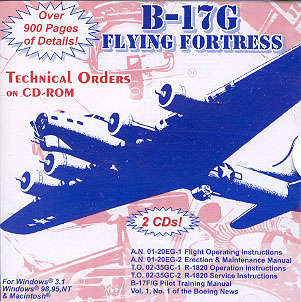
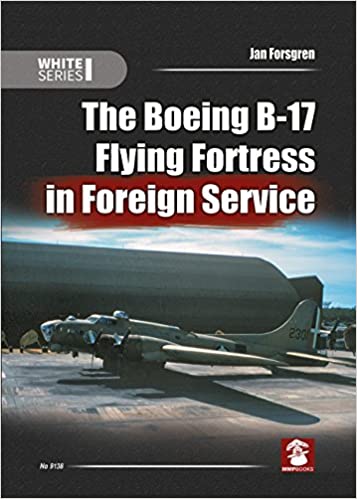




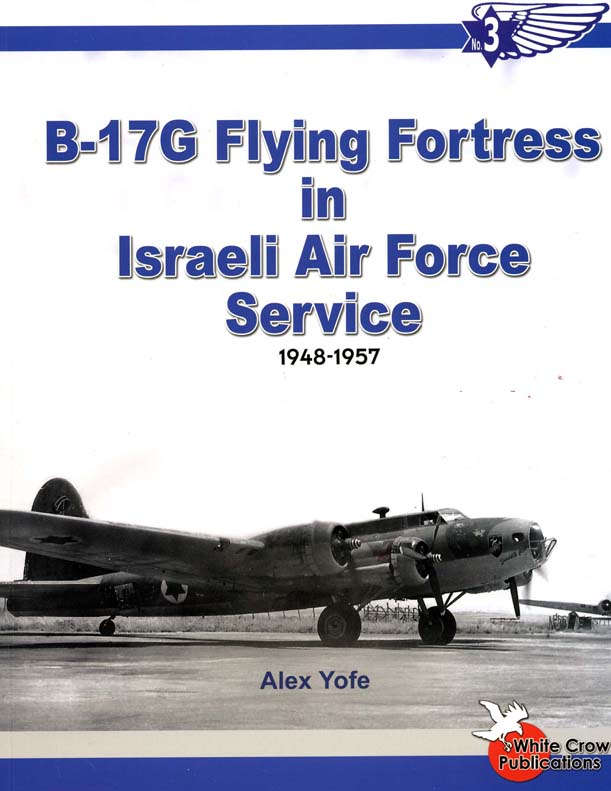
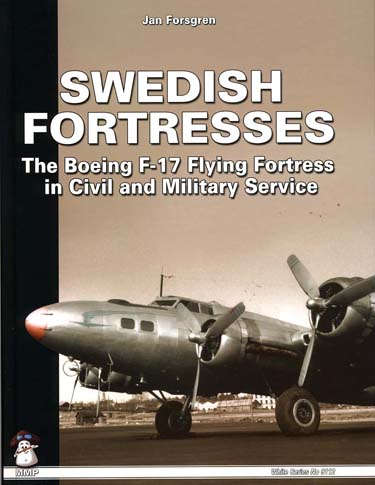
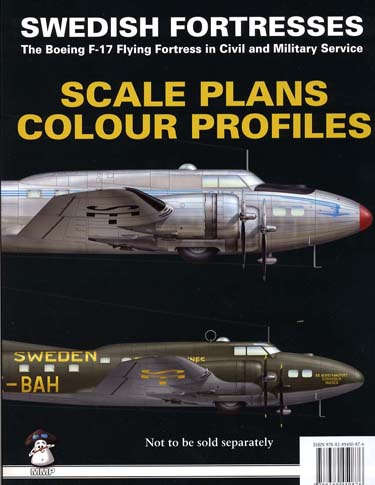
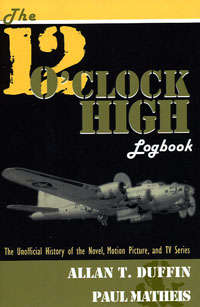
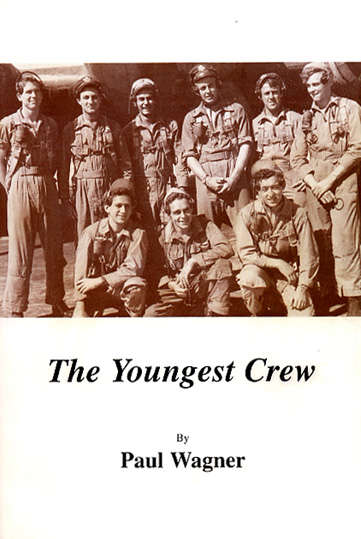
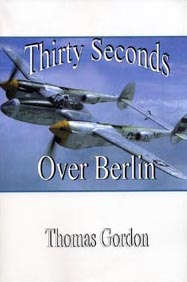
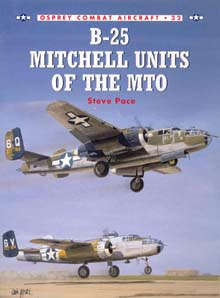
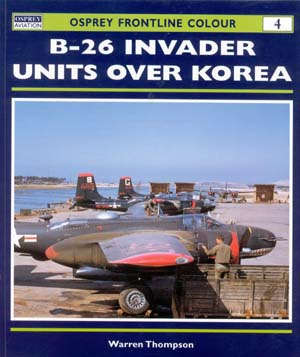
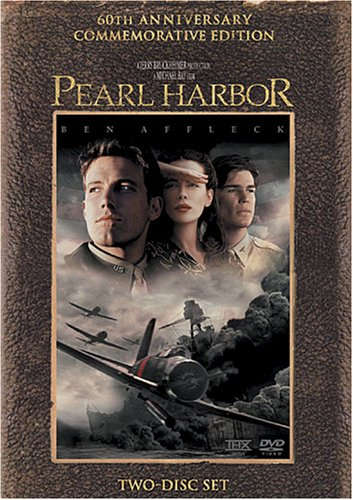



 >
>
